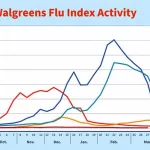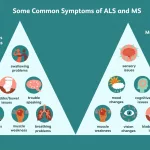Yes – you can move from a Medicare Advantage (Part C) plan back to Original Medicare and add a Medigap supplement, but you have to do it during the right enrollment windows and follow a few straightforward steps.
Doing it the right way protects you from coverage gaps, keeps your out‑of‑pocket costs predictable, and lets you keep the doctors you love. Below is the complete, no‑fluff roadmap you can walk through at your own pace.
Why Switch?
What are the biggest advantages of Medigap over Medicare Advantage?
- Unlimited provider choice: Any doctor or hospital that accepts Medicare is fair game – no network restrictions.
- Predictable costs: Medigap plans usually cover 100 % of the Medicare Part B coinsurance and many cover the Part A deductible, so you know exactly what your maximum out‑of‑pocket expense will be.
- No referrals or prior authorizations: Skip the hoops – you can see specialists directly.
- Consistent coverage nationwide: Perfect if you travel often or split time between states.
What risks or downsides should I watch for?
- Higher monthly premium: Medigap policies often cost more than a $0‑premium Medicare Advantage plan.
- Separate drug coverage needed: Medigap does not include prescription drug coverage, so you’ll need a stand‑alone Part D plan.
- Eligibility timing: Outside of your Medigap Open Enrollment Period, insurers can use medical underwriting, which may raise rates or lead to denial.
When does the balance tip in my favor?
If you travel a lot, have chronic conditions that need out‑of‑network specialists, or simply crave the peace of mind that comes with a guaranteed out‑of‑pocket maximum, Medigap often wins. On the other hand, if you love bundled benefits like dental, vision, and a $0 premium, staying with Medicare Advantage might still make sense.
Eligibility & Timing
What enrollment windows allow a penalty‑free switch?
The key dates are:
- Medicare Advantage Open Enrollment (Jan 1 – Mar 31): You can leave your MA plan, return to Original Medicare, and then apply for Medigap.
- Annual Election Period (Oct 15 – Dec 7): Same rights, just later in the year.
- Special Enrollment Periods (SEPs): Life events such as moving out of your plan’s service area, losing other insurance, or gaining Medicaid can trigger an immediate switch.
According to Healthline, these windows are the only times you can move to Medigap without risking a coverage gap or higher premium.
What is the Medigap Open Enrollment Period (OEP) and why is it crucial?
The OEP is a six‑month window that starts the first month you have Medicare Part B after turning 65. During this time you have “guaranteed issue” rights – insurers cannot deny you or charge more because of health status. It’s the golden ticket to a smooth Medigap enrollment.
Can I switch after the OEP?
Yes, but you’ll be subject to medical underwriting unless you qualify for another guaranteed‑issue scenario (for example, loss of other credible coverage). That often means higher premiums or even denial.
Step‑by‑Step Process
Step 1 – Confirm you have Original Medicare (Parts A & B)
Log into your Medicare.gov account and make sure Part B is active. If you’re still in a Medicare Advantage plan, you’ll need to submit a disenrollment request during the enrollment window you’re in.
Step 2 – Determine your Medigap Open Enrollment status
Check the month you first turned 65 and enrolled in Part B. Count six months from that point – that’s your OEP. Mark it on your calendar; it’s the period when you can shop risk‑free.
Step 3 – Shop for Medigap plans
Use the Medicare Plan Finder tool to compare standardized plans (A‑N). Look for:
- Whether the plan covers the Part A deductible (only Plans C and F—now unavailable to most new enrollees—do).
- Premium cost variations by state and insurer.
- “Guaranteed renewable” language in the policy documents.
Get at least three quotes. Ask each insurer, “If I have a pre‑existing condition, can you still enroll me without extra charge?”
Step 4 – Enroll in a Medigap policy
Complete the application during your OEP or an SEP. You’ll need your Part B number, personal identification, and payment method for the first premium. Once accepted, the insurer will send a confirmation with the effective date—make sure that date lines up with the day after you leave your MA plan.
Step 5 – Add a standalone Part D drug plan (if needed)
Medigap does not cover prescription drugs, so pick a Part D plan that matches your medication list. The Medicare Part D Plan Finder will show you premiums, formularies, and any coverage gaps.
Step 6 – Confirm the transition is complete
Log back into your Medicare portal and verify that:
- Original Medicare (A & B) is active.
- Your new Medigap policy is listed under “Supplemental Coverage.”
- Your Part D plan appears under “Prescription Drug Coverage.”
Give your previous Medicare Advantage insurer a quick call to confirm they have processed your disenrollment.
Cost Comparison
| Category | Medicare Advantage (Typical) | Medigap + Part D (Typical) |
|---|---|---|
| Monthly premium | $0 – $20 (often $0 for HMO plans) | $120 – $350 (Medigap) + $30 – $70 (Part D) |
| Deductible | $200 – $500 (varies by plan) | Part A deductible $1,600 (covered by many Medigap plans) Part B deductible $226 (you pay) |
| Coinsurance / Copay | 20 % coinsurance + $15‑$30 copays per visit | Usually 0 % – Medigap covers 100 % of Part B coinsurance |
| Out‑of‑pocket maximum | $3,000 – $7,500 (plan‑specific) | Typically $5,000 – $7,500 (set by Medigap plan) |
| Extra benefits (vision, dental, gym) | Often included | Not included; must purchase separately if desired |
Can I get financial assistance?
If your income is low, you may qualify for Medicare Savings Programs or Medicaid dual eligibility. Those programs can help cover Part B premiums and even lower your Medigap costs in some states.
Coverage Differences
Which services are bundled in MA but not in Medigap?
- Dental cleanings and major procedures.
- Vision exams, glasses, and contact lenses.
- Hearing aids and routine audiology.
- Wellness perks such as gym memberships, transportation vouchers, and over‑the‑counter allowances.
Do I lose any drug coverage?
Most Medicare Advantage plans bundle Part D. When you switch to Medigap, you’ll need a separate Part D plan. Choose one that covers your prescriptions without a “donut hole” that you can’t afford.
How does provider network affect me?
Medicare Advantage limits you to a network of doctors and hospitals (except in emergencies). Medigap, paired with Original Medicare, lets you see any Medicare‑accepting provider nationwide. That freedom is a lifesaver for retirees who split time between Florida and Colorado, for example.
What about prior authorizations and referrals?
Those are common in MA plans and can delay care. Medigap eliminates that step entirely – you simply show up and get treated.
Are there any coverage gaps to watch?
If the effective date of your Medigap policy is later than the day you leave your MA plan, you could experience a brief gap in Part B coverage. To avoid this, align the dates so the day after your MA disenrollment is the first day of your Medigap coverage.
Frequently Asked Questions
Can I switch from Medicare Advantage to Medigap any time?
No – only during the Medicare Advantage Open Enrollment (Jan 1‑Mar 31), the Annual Election Period (Oct 15‑Dec 7), or a qualifying Special Enrollment Period.
Do I need a new Part D plan after I get Medigap?
Yes. Medigap does not cover prescription drugs, so you must enroll in a stand‑alone Part D plan to maintain drug coverage.
Will my Medigap premium increase if I have a pre‑existing condition?
If you enroll during your Medigap OEP, insurers cannot charge more or deny coverage because of health status. Outside that window, underwriting could raise your premium.
What if I move out of my MA plan’s service area?
A move triggers a Special Enrollment Period, letting you leave the MA plan and apply for Medigap immediately.
Can I have both a Medigap policy and a Medicare Advantage plan?
No. Medigap policies work only with Original Medicare (Parts A & B). You must drop the MA plan first.
Real‑World Experience
Maria, 68, retired teacher – high travel frequency
Maria loved her MA plan’s $0 premium but hated the network limits when she drove from New York to Arizona for a family reunion. After switching to a Medigap plan during her OEP, she paid an extra $150 a month but saved $1,200 in out‑of‑pocket costs during the trip because she could see any local specialist without referrals.
James, 72, chronic heart condition
James was frustrated by the long referral chain in his HMO‑style MA plan. The delay caused a missed cardiology appointment. Switching to Medigap gave him direct access to his cardiologist, and his annual out‑of‑pocket expense capped at $6,000 – a predictable number he could budget for.
Linda, 66, low‑income – qualified for Medicaid
Linda lost her employer’s group health plan and qualified for a Special Enrollment Period. She paired Medicaid with a $0 Medigap plan offered in her state and added a low‑cost Part D plan. The combined coverage kept her health expenses under $50 a month.
Trusted Resources & Tools
Medicare.gov Plan Finder
Compare standardized Medigap plans (A‑N) side‑by‑side and view state‑specific premiums.
Healthline “Switching from MA to Medigap” guide
Provides a clear timeline of enrollment windows and common pitfalls.
Kaiser Family Foundation data hub
Offers up‑to‑date statistics on Medicare Advantage enrollment trends across the country.
State insurance department contact list
Use this list if you need to file a complaint or verify an insurer’s licensing status.
Certified Medicare Counselor directory
The CMS‑approved “Counselors” locator helps you find a trusted advisor in your area for a free, personalized review.
Conclusion
Switching from Medicare Advantage to Medigap isn’t a mystery – it just requires timing, a clear step‑by‑step plan, and a realistic look at costs versus freedom. By confirming your eligibility, using the proper enrollment windows, and shopping for the right Medigap and Part D policies, you can protect yourself from surprise bills, keep any doctor you trust, and gain predictable out‑of‑pocket limits.
Real‑world stories show that the transition can be smooth – and often worth the extra premium – especially for travelers, chronic‑condition patients, or anyone who values nationwide provider choice. Ready to make the move? Grab the printable checklist, call a certified Medicare counselor, and lock in your coverage before the next enrollment period closes. Your health, your budget, and your peace of mind are worth it.


















Leave a Reply
You must be logged in to post a comment.